 Technology peripherals
Technology peripherals
 AI
AI
 Advantages, Disadvantages and Application Analysis of Autonomous Driving Sensors
Advantages, Disadvantages and Application Analysis of Autonomous Driving Sensors
Advantages, Disadvantages and Application Analysis of Autonomous Driving Sensors
Advanced Driver Assistant System (ADAS), referred to as ADAS, uses various sensors installed on the car to collect environmental data inside and outside the car at the first time, and perform static driving. , dynamic object recognition, detection and tracking and other technical processing, so that the driver can detect possible dangers as quickly as possible to attract attention and improve safety. Active safety technology.
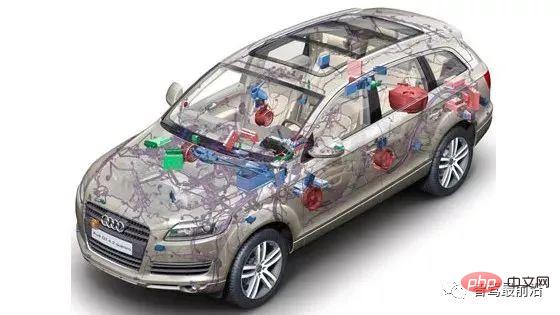
Automotive sensor
Automotive sensor equipment They have different purposes and can be divided into two categories: traditional microelectromechanical sensors (MEMS) to improve the informatization level of bicycles and smart sensors to support driverless driving. MEMS provides information feedback during the control process of various automobile systems to achieve automatic control. It is the "neuron" of the automobile. Smart sensors collect information directly from the outside world and are the "eyes" of driverless vehicles.
01 The foundation of automobile intelligence-sensors
Sensors are the information source of automobile electronic control systems and are Basic key components of vehicle electronic control systems. The sensor usually consists of a sensitive element, a conversion element and a conversion circuit. The sensitive element refers to the part of the sensor that can directly sense or respond to the measured value. The conversion element converts the above non-electrical quantities into electrical parameters. The function of the conversion circuit is to convert the conversion element into electrical parameters. The output electrical signals are processed and converted into parts that are convenient for processing, display, recording and control. Based on the different purposes of current automotive sensor equipment, it can be divided into two categories: traditional microelectromechanical sensors that improve the informatization level of bicycles and smart sensors that provide support for driverless driving.

Composition of automotive sensors
Tradition Sensors: The control process of each system relies on sensors to feedback information and realize automatic control work. They are the "neurons" of the car. Traditional automobile sensors can be divided into 8 categories according to their functions: pressure sensor, position sensor, temperature sensor, acceleration sensor, angular velocity sensor, flow sensor, gas concentration sensor and liquid level sensor. Automotive sensors are mainly used in powertrain systems, body control systems and chassis systems. Automotive sensors are responsible for collecting and transmitting information in these systems. The information collected is processed by the electronic control unit and then formed into instructions to the actuators to complete electronic control.

Traditional sensor classification
Smart sensor :Smart sensors are the “eyes” of driverless vehicles. Cars are rapidly evolving into a securely networked self-driving robot, capable of environmental perception, planning and decision-making, and ultimately reaching their destination safely. Currently, the mainstream sensor products used in environmental sensing mainly include lidar, millimeter wave radar, ultrasonic radar and camera.
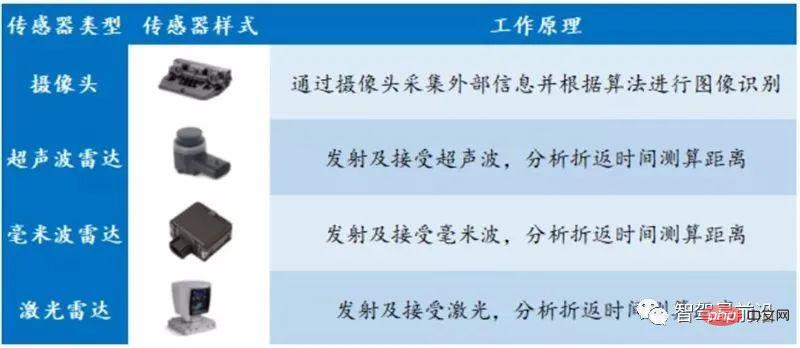
Intelligent Sensor Classification
02 MEMS Sensor: Automotive Microsensory
#MEMS sensor is a new type of sensor developed on the basis of semiconductor manufacturing technology and manufactured using microelectronics and micromachining technology. MEMS sensors are widely used in electronic stability program (ESP), anti-lock braking (ABS), electronically controlled suspension (ECS), tire pressure monitoring (TPMS) and other systems. Among them, pressure sensors, accelerometers, gyroscopes and flow sensors are the most commonly used MEMS sensors in automobiles, accounting for 99% of automobile MEMS systems.
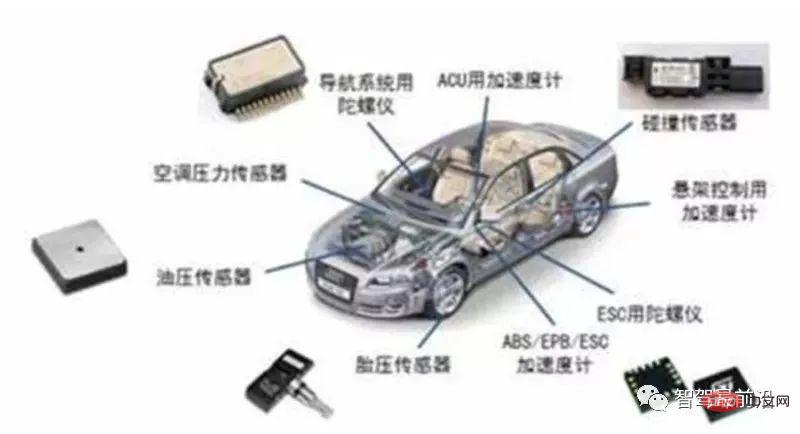
##MEMS is widely used
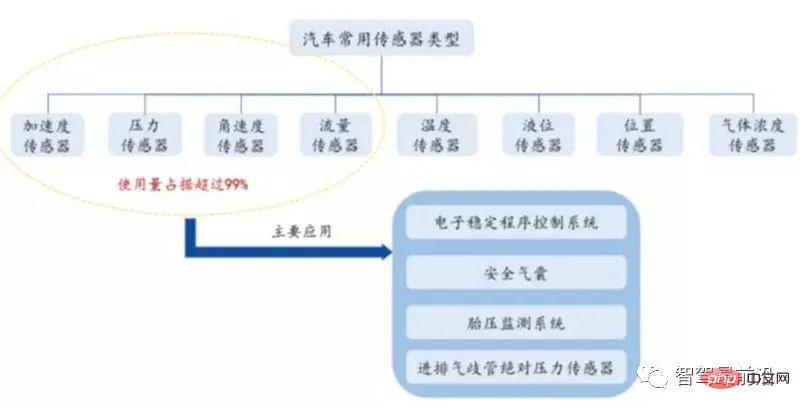
The value of MEMS sensors is relatively concentrated
MEMS has obvious Advantages are one of the main choices for building sensors in the sensing layer of the Internet of Things in the future. Its advantages are mainly reflected in: 1) miniaturization, 2) silicon-based processing technology, 3) mass production, and 4) integration.
#1) Miniaturization: MEMS devices are small in size, with single dimensions measured in millimeters or even microns, light in weight and low in energy consumption. The higher surface-to-volume ratio (surface area to volume) of MEMS can increase the sensitivity of surface sensors.
2) Mass production: Taking a single 5mm5mm size MEMS sensor as an example, silicon micromachining technology can be used on an 8-inch silicon wafer at the same time Cutting out approximately 1,000 MEMS chips, mass production can greatly reduce the production cost of a single MEMS.
#3) Integration: Generally speaking, a single MEMS often not only packages mechanical sensors, but also integrates ASIC chips to control MEMS chips and convert simulations. The quantity is digital output.
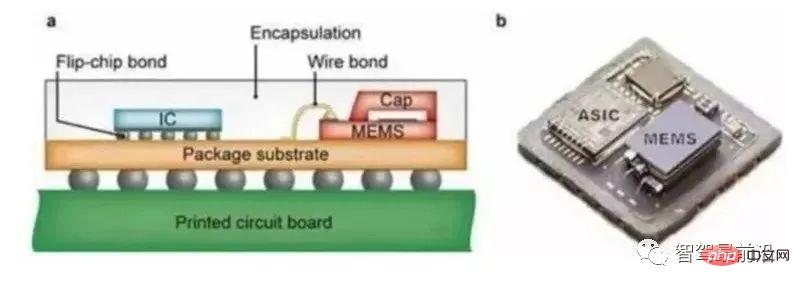
##MEMS and ASIC chip integrated packaging
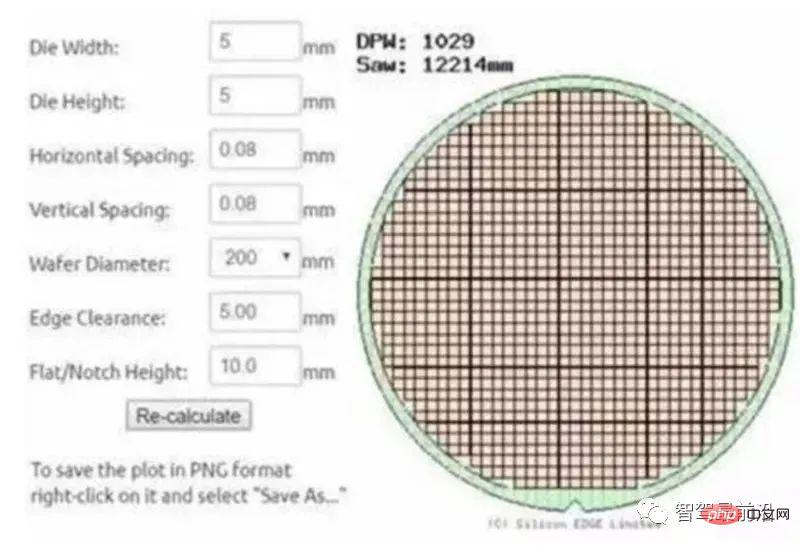
Major foreign manufacturers monopolize the MEMS sensor market, and the market concentration is high. According to statistics from HIS Automotive, the top three global MEMS suppliers (Bosch, Sensata, and NXP) accounted for 57% of the market share in 2017, with Bosch occupying the top spot, with a market share of 33.62% in 2017, and Sensata City The market share reached 12.34%, and NXP’s market share reached 11.91%. Manufacturers such as Denso (8.94%), Analog Devices (8.51%), Panasonic (7.45%), and Infineon (7.23%) also occupy a certain share.
Foreign major manufacturers have a wide product line, leading technology, and numerous customers, forming a high entry barrier. The difficulty in developing MEMS sensors and the complexity of their manufacturing processes are the main reasons for the formation of industry barriers. Foreign manufacturers such as Invensense and Infineon have 2 to 3 product lines, and MEMS product lines such as Bosch, Denso, and STMicroelectronics have more than 4 product lines. In contrast, it is difficult for small suppliers to achieve mass production and manufacturing in a short period of time. Therefore, the market share of the top large suppliers is relatively stable and the market concentration is high.
The assembly volume and value of MEMS sensors are directly proportional to the price of the model in which they are assembled. Currently, the average car contains 24 MEMS sensors, and in high-end cars, about 25-40 MEMS sensors are used. For example, BMW's high-end models can use 20-40 sensors in the engine alone, while entry-level models only have about 5. The value of a commonly used MEMS sensor-installed bicycle ranges from 2,000 to 20,000 yuan; joint venture vehicles usually cost no less than 4,000 yuan, while independent brands only cost about 2,000 yuan, and high-end models cost about 10,000-20,000 yuan. It is expected that the MEMS sensor market size will reach 42.013 billion yuan by 2019; with the improvement of intelligence and electrification, the market size will reach 44.621 billion yuan and 47.227 billion yuan respectively in 2020 and 2021. The compound growth rate from 2015 to 2021 is 6.5%.
Millimeter wave radar: core sensor of ADAS system Millimeter wave radar refers to the use of millimeter waves with a wavelength of 1-10nm and a frequency of 30GHZ-300GHZ to calculate the distance by measuring the time difference of the echoes. Millimeter-wave radar was first used in the military field, and with the improvement of technology, it has gradually been used in the automotive field. The advantages of millimeter wave radar are mainly in the following three aspects: 1) Stable detection performance, long range, and good environmental applicability. 2) Compared with ultrasonic radar, it has the characteristics of small size, light weight and high spatial resolution. 3) Compared with optical sensors, millimeter-wave radar has a strong ability to penetrate fog, smoke, and dust, and has the characteristics of all-weather and all-weather operation. However, there are also shortcomings such as high cost and difficulty in identifying pedestrians. ##Advantages and Disadvantages of Millimeter Wave Radar 77 GHz offers advantages in both performance and size. At present, the frequency of vehicle radar is mainly divided into 24GHZ frequency band and 77GHZ frequency band. Compared with 24GHz millimeter-wave radar, 77GHz has higher distance resolution and is one-third smaller. In 2018, the China New Car Assessment Program (C-NCAP) included automatic emergency braking systems (AEBS) into the scoring system, which will drive future market demand for 77GHz millimeter wave radar. In the long run, the 77GHz millimeter wave radar is smaller and has a longer detection range, which will make it have a larger market space than the 24GHz millimeter wave radar. ##Comparison of millimeter wave radar 24GHz and 77GHz 24GHz and 77GHz millimeter wave radars are used for both long and short range detection of ADAS. Millimeter-wave radar is widely used in ADAS systems because its hardware is small and not affected by bad weather. 24GHz is currently widely used in blind spot monitoring and lane change assistance in automobiles. The radar is installed in the rear bumper of the vehicle and is used to monitor whether there are cars in the lanes on both sides behind the vehicle and whether it is possible to change lanes. 77GHz radar is superior to 24GHz radar in terms of detection accuracy and distance. It is mainly used to be installed on the front bumper of a vehicle to detect the distance and speed of the vehicle in front. It mainly implements emergency braking, automatic car following and other active functions. Security domain functions. Fully realizing various ADAS functions generally requires 5 millimeter wave radars (1 long, 4 medium and short). The Audi A8 is equipped with 5 millimeter wave radars (1LRR 4MRR), and the Mercedes-Benz S-Class is equipped with 6 millimeter wave radars (1LRR 6SRR). At present, the unit price of 77GHz millimeter wave radar system is about 1,000 yuan, and the unit price of 24GHz millimeter wave radar is about 500 yuan. Application of millimeter wave radar in ADAS system The key technology of millimeter wave radar is monopolized by foreign companies, with a high degree of concentration. In the global millimeter wave radar market, countries such as Germany, the United States, and Japan dominate. At present, millimeter wave radar technology is mainly monopolized by traditional component giants such as Continental, Bosch, Denso, Autoliv, Denso, and Delphi; among them, 77GHz millimeter wave radar technology is monopolized by Bosch, Continental, Delphi, Denso, TRW, In the hands of companies such as Fujitsuten and Hitachi. In 2016, Bosch and Continental both had 17% of the global millimeter wave radar market share, tied for first place; Denso and Hella tied for second, with a market share of 11%, ZF accounted for 8%, Delphi accounted for 6%, and Austria Toliv holds 4%. The top seven supplier giants account for 73% of the market. Domestic millimeter wave radar relies on imports and is subject to foreign technology blockades. 24GHz millimeter wave radar is the mainstream direction. At present, all millimeter-wave radar sensors assembled in high-end cars in the Chinese market rely on foreign imports. The market is monopolized by American, Japanese, and German companies. The prices are expensive and technical blockades are adopted. Independent control is imminent. Domestic independent vehicle-mounted millimeter-wave radar products are generally still in the development stage. Considering the research and development costs and the limitations of 77GHz development technology, domestic manufacturers are currently focusing on 24GHz in the research and development of millimeter wave radar. In the domestic market, the product system of 24GHz millimeter wave radar is relatively mature and the supply chain is relatively stable. 24GHz core chips can be obtained from chip suppliers such as Infineon and Freescale. According to research from Memes Consulting, the number of pre-installed millimeter wave radars in Chinese cars reached 1.05 million in 2016, of which 24GHz radars accounted for 63.8% and 77GHz radars accounted for 36.2%. According to estimates, the market size of millimeter wave radar can reach 470 million yuan, 3.6 billion yuan, and 8 billion yuan in 2025. The compound growth rate from 2017 to 2025 is about 58%. Lidar: The key to L3-L5 autonomous driving ## Lidar is a comprehensive light detection and measurement system that emits and receives laser beams, analyzes the reentry time after the laser encounters the target object, and calculates the relative distance between the target object and the car. Currently, 8-line, 16-line, and 32-line lidar are commonly used. The more lidar wire beams, the higher the measurement accuracy and the higher the safety. Lidar is not a new thing and has long been used in aerospace, surveying and mapping and other fields. With the development of automobile intelligence, lidar has begun to be used in L3 level autonomous driving. Due to its high-precision, real-time 3D environment modeling characteristics, it will become the most critical sensor in the L3-L5 stage. Working principle of lidar Velodyne HDL-64E Lidar 3D Imaging Lidar Solid State Miniaturization is the future trend, and it has the advantages of miniaturization and low cost. There are two main ways to reduce the cost of lidar in the industry: 1) Eliminate the mechanical rotating structure and use solid-state technology to fundamentally reduce the cost of lidar. Solid-state LiDAR is smaller, easier to integrate, and has improved system reliability. Therefore, LiDAR has a trend towards solid-state development. 2) Reduce the number of lidar lines and use multiple low-line number lidars in combination. From mechanical rotary to hybrid solid-state to pure solid-state lidar, with the expansion of mass production scale and technology iteration and update, the cost continues to decrease, and lidar is also constantly developing towards miniaturization, low power consumption and integration. The core technology of lidar is mainly controlled by three companies: Velodyne, Ibeo, and Quanergy. The American Velodyne's mechanical lidar started early and is technologically advanced. It has recently launched the 128-line prototype product VLS-128. It has also established cooperative relationships with global autonomous driving leaders such as Google, General Motors, Ford, Uber, and Baidu, occupying a large market share. Automotive LiDAR holds the majority of the market share. Google, Baidu, Ford, Audi, BMW and other companies have successively adopted lidar sensing solutions. BMW announced that it is teaming up with lidar startup Innoviz to develop driverless cars, which are expected to be launched in 2021. According to the price of lidar products on each company's official website, the value of a bicycle lidar sensor ranges from US$30,000 to US$80,000. Lidar will not be widely used in the automotive field in the short term. Although the accelerated development of autonomous driving has created good application prospects for the lidar industry, many pain points in the development of lidar limit its application in autonomous vehicles. There are three main limiting factors: 1) High cost. The lidar leader Velodyne’s 16-line product is US$8,000, its 32-line product is US$40,000, and its 64-line product is approximately US$80,000. #High product prices also inhibit the application of lidar in autonomous vehicles. 2) Difficulty in mass production and long delivery cycle. The production cycle of Velodyne64 line products takes 4-8 weeks, and 32-line and 16-line products also take 2-4 weeks. In order to ensure the accuracy of the laser radar transmitting and receiving signals, its complex assembly and adjustment process lengthens its delivery cycle. 3) Lack of relevant vehicle regulations. At present, autonomous driving is only a forward-looking concept that has not yet been put into practice, and there are no corresponding mandatory requirements in policies and regulations. This also limits the popularity of lidar in the field of autonomous driving to a certain extent. Ultrasonic radar: the mainstream sensor for automatic parking systems The working principle of ultrasonic radar is to measure the distance by emitting ultrasonic waves from the ultrasonic transmitter and receiving the transmitted ultrasonic waves through the receiver. In autonomous driving, the basic applications of ultrasonic radar are parking assist warning and blind spot collision warning functions. Ultrasonic radar is low cost, has advantages in short-distance measurements, has a detection range of 0.1-3 meters, and has high accuracy, so it is very suitable for parking. However, the measurement distance is limited and it is easily affected by bad weather. ##Working principle of ultrasonic radar Automatic The popularity of parking stimulates demand for ultrasonic radar. Ultrasonic radar is generally installed on the bumper or side of the car. The former is called UPA, which is generally used to measure obstacles at the front and rear of the car, and the latter is called APA, which is used to measure side obstacles. The APA ultrasonic sensor is the core component of the automatic parking assistance system. It has a long detection range and can be used to detect the width of the parking space and obtain parking space size and vehicle location information. Ultrasonic radar is mainly used in reversing radar and close-range obstacle monitoring in automatic parking systems. Reversing radar has moved from high-end models to mid- to low-end models, with a pre-installation rate of about 80%. The reversing radar system usually requires 4 UPA ultrasonic radars, and the automatic parking radar system requires 6-12 ultrasonic radars. The typical configuration is 8 UPAs and 4 APAs. 03 Intelligent sensor: core of autonomous driving
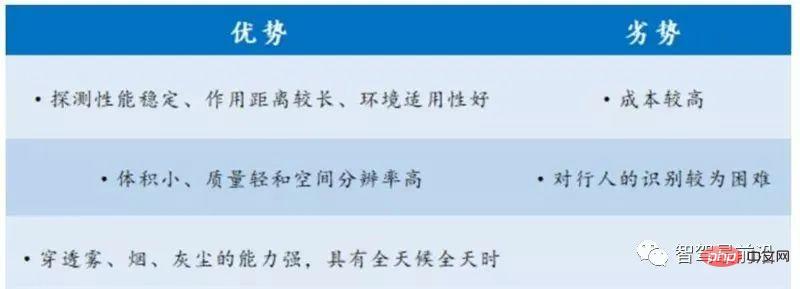

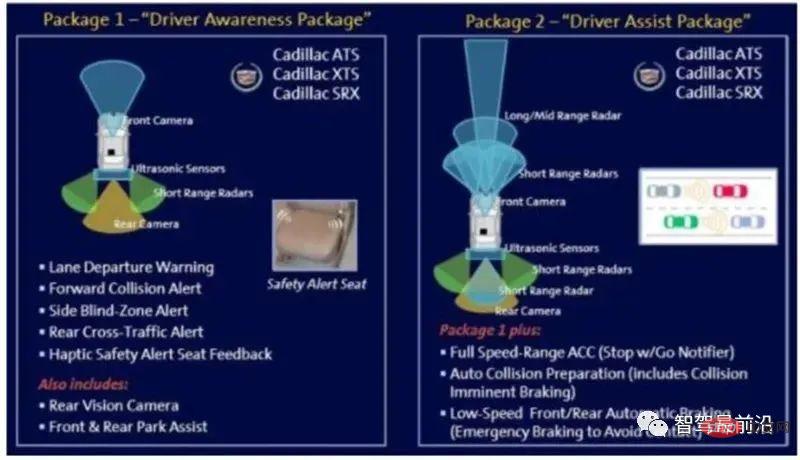
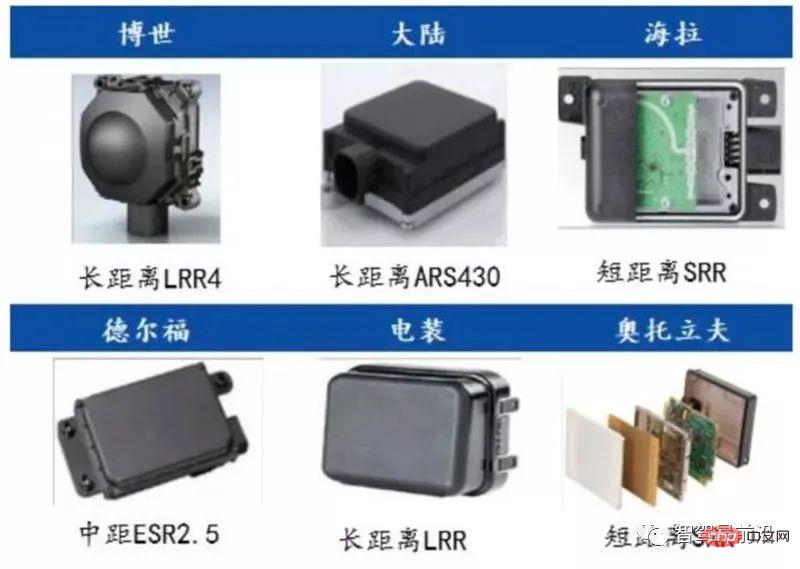

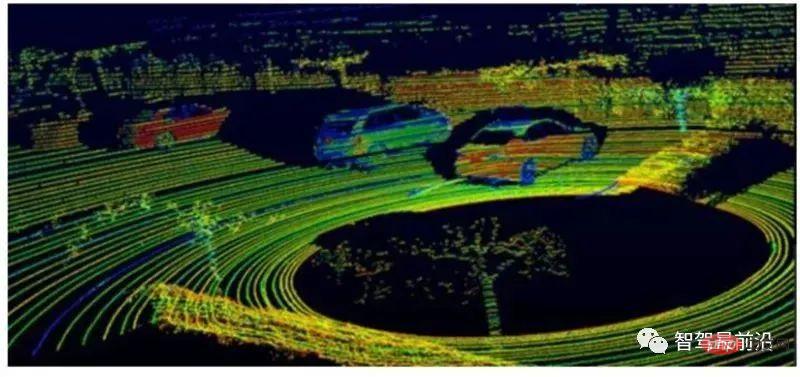
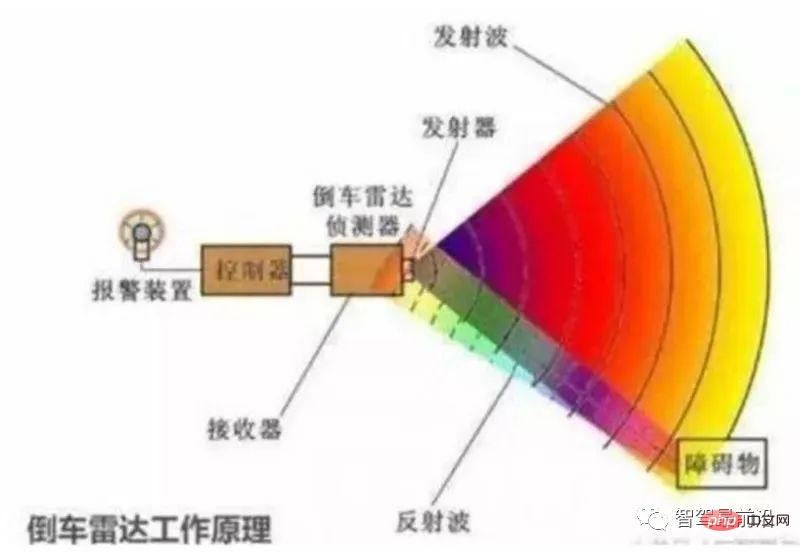
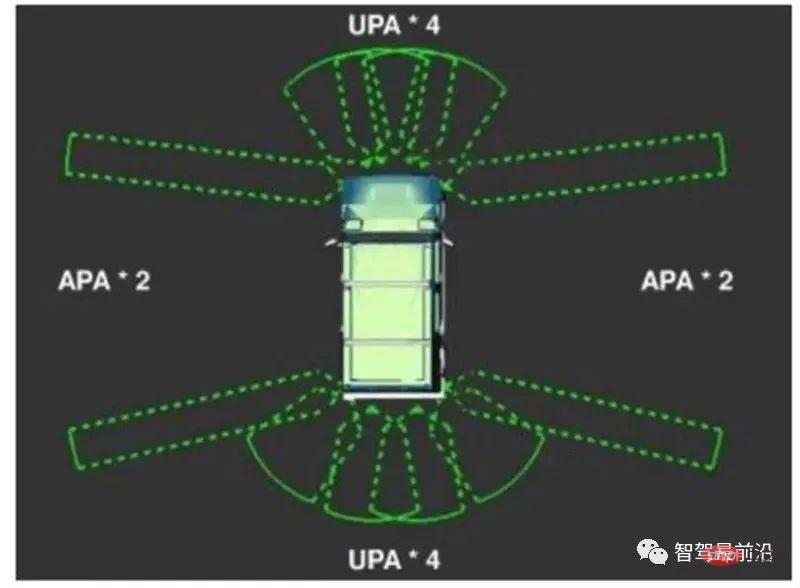
##Application of ultrasonic radar in automobiles

Comparison of UPA and APA ultrasonic radar
##Ultrasonic radar technology Each scheme has its own advantages and disadvantages, and analog radar occupies the main market. The technical solutions of ultrasonic radar generally include four types: analog, four-wire digital, two-wire digital, and three-wire active digital, which are successively improved in the processing effect of signal interference. The four technical solutions have their own advantages and disadvantages in terms of technical difficulty, assembly and price. At present, the "analog" technology route is widely used in the market. Its advantage is low product cost, but it is susceptible to interference from the external environment. Under the future trend of intelligence, the "digital" technology route will be more popular. Under the "digital" technology route, signal digitization can greatly improve the radar's anti-interference ability, but the cost is high and the technology is difficult. At this stage, most of the technology can only adopt a four-wire approach.

The ultrasonic radar market is mainly occupied by Bosch, Murata, Nicera, etc. Domestic Audiway and Tongda Electronics have high competitiveness. Audiway is the leading ultrasonic sensor manufacturer in China. In 2016, Audiway's vehicle-mounted ultrasonic sensors sold 26.27 million units. The global market capacity of vehicle-mounted ultrasonic sensors is approximately 274 million units. Audiway's vehicle-mounted ultrasonic sensors account for the global passenger car market share. 9%. Audiway's largest customer is Taiwan Tongcheng Electronics. Taiwan Tongcheng Electronics' core product is reversing radar, and its market share ranked first in Asia in 2016. #The ultrasonic market is expected to continue to improve in the short and medium term, and may be subject to substitution pressure from other radar sensors in the long term. At present, the installation rate of rear-facing ultrasonic radar is the highest, reaching 45.2%, the installation rate of "forward-facing and rear-facing radar" is 28.3%, and the proportion of not equipped is 26.5%. With the development of automated driving, "forward-facing and rear-facing" radar is expected to become standard equipment. Therefore, it is expected that in the short to medium term, the market share of ultrasonic radar will continue to increase, but in the long term, in future high-level autonomous driving models, some or all of the ultrasonic radars will be replaced by millimeter wave radars, lidars, etc. with better comprehensive performance. substitute. According to estimates, the market size of ultrasonic radar will reach 4.2 billion yuan, 8.7 billion yuan, and 19.2 billion yuan in 2019, 2020, and 2025 respectively. The compound growth rate from 2016 to 2025 will reach about 38%. Camera: Main visual sensor of ADAS system ##In-vehicle The camera is the main visual sensor of the ADAS system and one of the most mature automotive sensors. After the image is collected through the lens, the photosensitive component circuit and control component in the camera process the image and convert it into a digital signal that can be processed by the computer, thereby realizing the perception of the road conditions around the vehicle. Cameras are mainly used in ADAS functions such as 360 panoramic images, forward collision warning, lane departure warning and pedestrian detection. Camera detects pedestrians on the road Application of cameras in panoramic parking system ADAS system is equipped with more than 6 cameras. According to the needs of different ADAS functions, the installation location of the camera is also different. Mainly divided into front view, rear view, side view and built-in. When realizing autonomous driving, a full set of ADAS functions will require the installation of more than 6 cameras. The front-view camera requires complex algorithms and chips, and the unit price is about 1,500 yuan. The unit price of the rear-view, side-view and built-in cameras is about 200 yuan. The popular application of ADAS has brought huge market space for vehicle camera sensors. Camera installation location and features In the short term, monocular cameras will be the mainstream technology route. The forward-looking camera ADAS system can be divided into two technical routes: equipped with a monocular camera and equipped with a binocular camera. Compared with monocular cameras, binocular cameras are more powerful and more accurate in measurement, but the cost is relatively high, so they are often installed in high-end cars. The binocular camera solution is restricted by comprehensive factors such as cost, manufacturing process, reliability, and accuracy, which makes it difficult to promote it in the market. However, the low-cost and reliable solution of the monocular camera, combined with other sensors, can fully meet the needs. Functions in L1, L2, and some L3 scenarios. Therefore, under the current market environment, monocular camera solutions will still be mainstream. The camera is mainly used as a radar auxiliary sensor. Although the camera has high resolution and can detect the texture and color of objects, the visual effect is poor under backlighting or complex light and shadow conditions, and it is easily affected by bad weather. Therefore, the image information obtained by the camera will be mainly responsible for a few tasks such as traffic sign recognition. field, as a complement to lidar and millimeter wave radar. The camera industry chain can be roughly divided into three parts: upstream component production, midstream module packaging and integration, and downstream product application. 1) Upstream components mainly include CMOS sensors, lens sets, DSP, etc. In the upstream market, CMOS sensors and DSP are mainly monopolized by foreign companies such as Sony, Samsung, TI, and ON Semiconductor. Domestic companies have advantages in the production of lens sets, including independent brands. Sunny Optical and others have high competitiveness; 2) Midstream packaging integration includes module packaging and system integration. Module packaging and integration processes are complex, and the market is monopolized by foreign companies. The main manufacturers include Panasonic, Sony, Valeo and other companies. 3) Downstream products are used in vehicle manufacturers and 4S stores. #The automotive camera industry has high production process requirements and a long certification cycle. Compared with mobile phone cameras, vehicle-mounted cameras face more severe working conditions and need to meet many requirements such as high temperature resistance, earthquake resistance, anti-magnetic, and stability. In particular, front-view cameras used in ADAS systems must have very high reliability requirements when it comes to driving safety, so the manufacturing process of in-vehicle cameras is very demanding. Before a company becomes a first-tier supplier to an automobile manufacturer, it needs to undergo a large number of different types of rigorous tests. Once it enters the supply system of an automobile manufacturer, it will form high barriers, making it difficult to be replaced, and the replacement cost is also very high. For example, it took Mobileye, a leading foreign vision sensor company, eight years to enter the pre-installation market from R&D. According to calculations, the camera market size of camera sensors is expected to reach 15 billion yuan in 2019, entering the L3 stage, and the market size can reach 20.5 billion yuan in 2020 and 2025 and 31.5 billion yuan, with a compound growth rate of about 17% from 2016 to 2025. ADAS integrates multiple sensors to drive the development of the sensor market. As the proportion of smart cars increases in the future, the ADAS market will accelerate growth. According to research by the Global Investment Research Department of Goldman Sachs, the current global ADAS usage rate is generally not high, with only 8%-12% in Europe, the United States and Japan. According to calculations by the Gasgoo Automotive Research Institute, my country's ADAS is around 2%-5%; judging from the life cycle, ADAS has achieved a leap from the introduction period to the growth period. Overall, under the wave of smart driving and driverless driving, the level of electronics and intelligence in automobiles continues to improve, and ADAS has a lot of room for growth. Environmental perception is the hardware foundation of ADAS, and the application of sensors is indispensable. The increase in ADAS usage will drive a substantial increase in the demand for vehicle-mounted sensors, and the market size of sensors will further expand in the future. ADAS integrates multiple sensors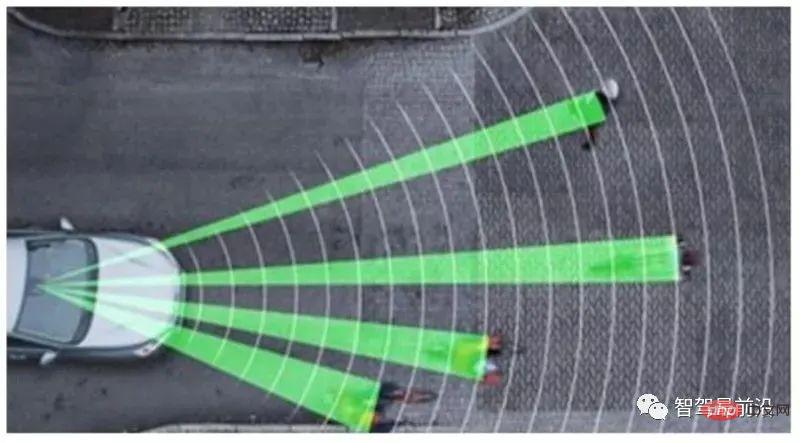
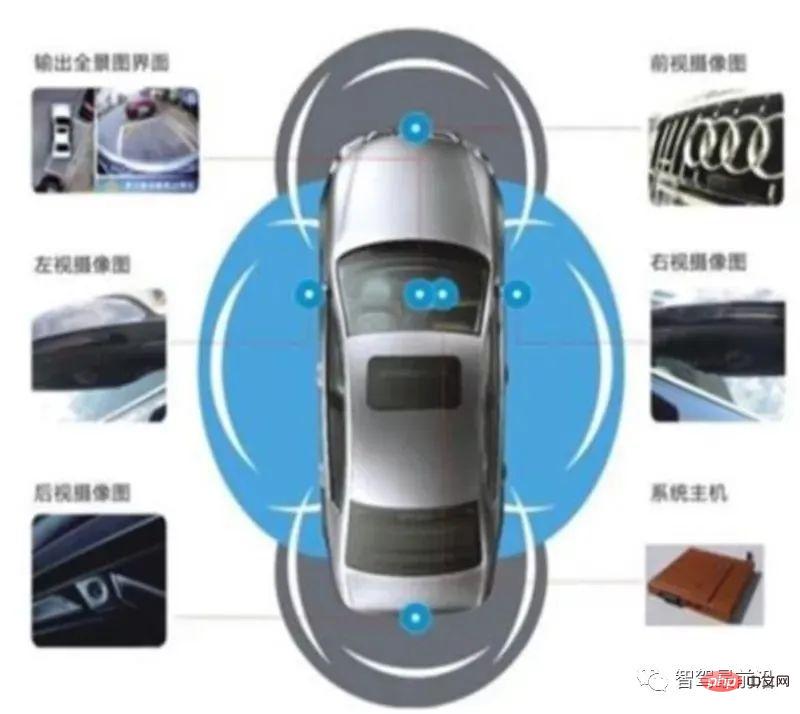

#04 Multi-sensor fusion is an inevitable trend

Environmental sensing sensors are the eyes of the car, and millimeter wave radar has outstanding comprehensive advantages. In the context of the intelligent era, environmental perception is particularly important. Different sensors have different principles and functions. They play their respective advantages in different scenarios and are difficult to replace each other. Millimeter wave radar has outstanding comprehensive advantages and is expected to become the main sensor of ADAS systems.
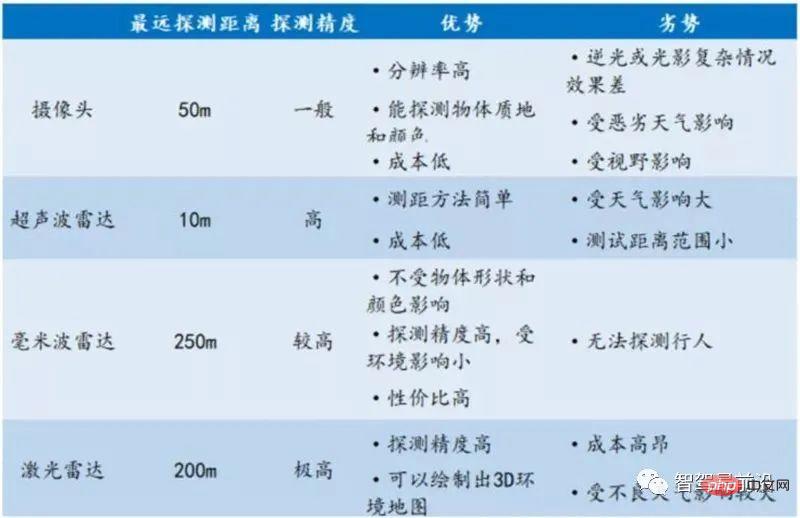
Comparison of the advantages and disadvantages of various sensors
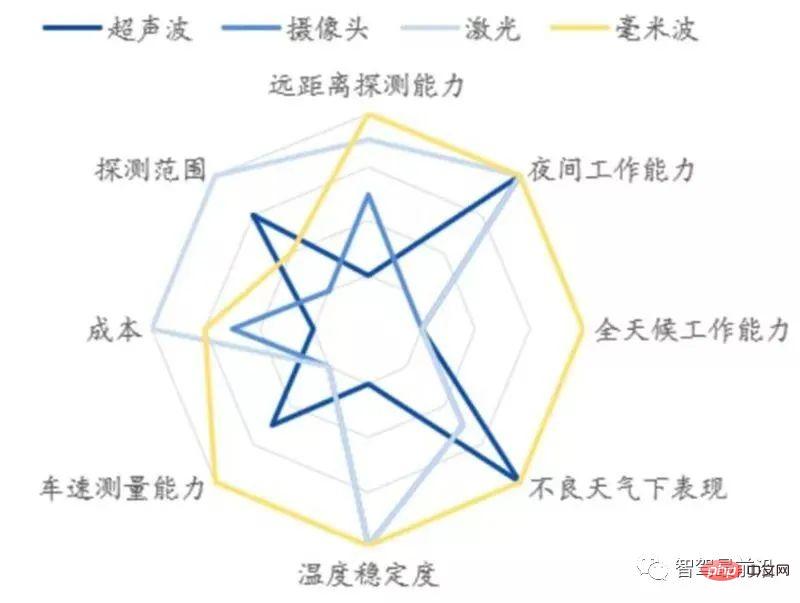
Millimeter wave radar has outstanding comprehensive advantages
A single sensor has outstanding characteristics and cannot form complete information coverage. Multi-sensor fusion is an inevitable trend in future development. It also provides the necessary technical reserves for the realization of Level 3-Level 5 autonomous driving solutions. There are currently two main technical routes for autonomous driving environment perception: one is a vision-led multi-sensor fusion solution represented by Tesla, and the other is led by low-cost lidar, with typical representatives such as Google Waymo. Mainstream foreign car companies such as Tesla, Audi, General Motors, etc. have released their multi-sensor plans for self-driving cars. Multi-sensor fusion is crucial to ensure the vehicle's global positioning and understanding of the surrounding environment.
Generally speaking, the sensors used in ADAS mainly include cameras, radars, lasers and ultrasonic waves, which can detect light, heat, pressure or other things for monitoring Variables of car status are usually located on the vehicle's front and rear bumpers, side mirrors, inside the steering column, or on the windshield. When each type of subsystem in ADAS operates, it is inseparable from the collection, processing and judgment of information. After the judgment is completed, the system gives instructions to the car body to make the car carry out different actions and other stages. In such a process, sensors such as radar and cameras, as well as processors such as MCU or image processing IC, have become the most important components used. On the road to L5 level autonomous driving, the maturity and perfection of the ADAS system is the basic guarantee.
The above is the detailed content of Advantages, Disadvantages and Application Analysis of Autonomous Driving Sensors. For more information, please follow other related articles on the PHP Chinese website!

Hot AI Tools

Undresser.AI Undress
AI-powered app for creating realistic nude photos

AI Clothes Remover
Online AI tool for removing clothes from photos.

Undress AI Tool
Undress images for free

Clothoff.io
AI clothes remover

Video Face Swap
Swap faces in any video effortlessly with our completely free AI face swap tool!

Hot Article

Hot Tools

Notepad++7.3.1
Easy-to-use and free code editor

SublimeText3 Chinese version
Chinese version, very easy to use

Zend Studio 13.0.1
Powerful PHP integrated development environment

Dreamweaver CS6
Visual web development tools

SublimeText3 Mac version
God-level code editing software (SublimeText3)

Hot Topics
 1387
1387
 52
52
 Why is Gaussian Splatting so popular in autonomous driving that NeRF is starting to be abandoned?
Jan 17, 2024 pm 02:57 PM
Why is Gaussian Splatting so popular in autonomous driving that NeRF is starting to be abandoned?
Jan 17, 2024 pm 02:57 PM
Written above & the author’s personal understanding Three-dimensional Gaussiansplatting (3DGS) is a transformative technology that has emerged in the fields of explicit radiation fields and computer graphics in recent years. This innovative method is characterized by the use of millions of 3D Gaussians, which is very different from the neural radiation field (NeRF) method, which mainly uses an implicit coordinate-based model to map spatial coordinates to pixel values. With its explicit scene representation and differentiable rendering algorithms, 3DGS not only guarantees real-time rendering capabilities, but also introduces an unprecedented level of control and scene editing. This positions 3DGS as a potential game-changer for next-generation 3D reconstruction and representation. To this end, we provide a systematic overview of the latest developments and concerns in the field of 3DGS for the first time.
 How to solve the long tail problem in autonomous driving scenarios?
Jun 02, 2024 pm 02:44 PM
How to solve the long tail problem in autonomous driving scenarios?
Jun 02, 2024 pm 02:44 PM
Yesterday during the interview, I was asked whether I had done any long-tail related questions, so I thought I would give a brief summary. The long-tail problem of autonomous driving refers to edge cases in autonomous vehicles, that is, possible scenarios with a low probability of occurrence. The perceived long-tail problem is one of the main reasons currently limiting the operational design domain of single-vehicle intelligent autonomous vehicles. The underlying architecture and most technical issues of autonomous driving have been solved, and the remaining 5% of long-tail problems have gradually become the key to restricting the development of autonomous driving. These problems include a variety of fragmented scenarios, extreme situations, and unpredictable human behavior. The "long tail" of edge scenarios in autonomous driving refers to edge cases in autonomous vehicles (AVs). Edge cases are possible scenarios with a low probability of occurrence. these rare events
 Choose camera or lidar? A recent review on achieving robust 3D object detection
Jan 26, 2024 am 11:18 AM
Choose camera or lidar? A recent review on achieving robust 3D object detection
Jan 26, 2024 am 11:18 AM
0.Written in front&& Personal understanding that autonomous driving systems rely on advanced perception, decision-making and control technologies, by using various sensors (such as cameras, lidar, radar, etc.) to perceive the surrounding environment, and using algorithms and models for real-time analysis and decision-making. This enables vehicles to recognize road signs, detect and track other vehicles, predict pedestrian behavior, etc., thereby safely operating and adapting to complex traffic environments. This technology is currently attracting widespread attention and is considered an important development area in the future of transportation. one. But what makes autonomous driving difficult is figuring out how to make the car understand what's going on around it. This requires that the three-dimensional object detection algorithm in the autonomous driving system can accurately perceive and describe objects in the surrounding environment, including their locations,
 This article is enough for you to read about autonomous driving and trajectory prediction!
Feb 28, 2024 pm 07:20 PM
This article is enough for you to read about autonomous driving and trajectory prediction!
Feb 28, 2024 pm 07:20 PM
Trajectory prediction plays an important role in autonomous driving. Autonomous driving trajectory prediction refers to predicting the future driving trajectory of the vehicle by analyzing various data during the vehicle's driving process. As the core module of autonomous driving, the quality of trajectory prediction is crucial to downstream planning control. The trajectory prediction task has a rich technology stack and requires familiarity with autonomous driving dynamic/static perception, high-precision maps, lane lines, neural network architecture (CNN&GNN&Transformer) skills, etc. It is very difficult to get started! Many fans hope to get started with trajectory prediction as soon as possible and avoid pitfalls. Today I will take stock of some common problems and introductory learning methods for trajectory prediction! Introductory related knowledge 1. Are the preview papers in order? A: Look at the survey first, p
 Let's talk about end-to-end and next-generation autonomous driving systems, as well as some misunderstandings about end-to-end autonomous driving?
Apr 15, 2024 pm 04:13 PM
Let's talk about end-to-end and next-generation autonomous driving systems, as well as some misunderstandings about end-to-end autonomous driving?
Apr 15, 2024 pm 04:13 PM
In the past month, due to some well-known reasons, I have had very intensive exchanges with various teachers and classmates in the industry. An inevitable topic in the exchange is naturally end-to-end and the popular Tesla FSDV12. I would like to take this opportunity to sort out some of my thoughts and opinions at this moment for your reference and discussion. How to define an end-to-end autonomous driving system, and what problems should be expected to be solved end-to-end? According to the most traditional definition, an end-to-end system refers to a system that inputs raw information from sensors and directly outputs variables of concern to the task. For example, in image recognition, CNN can be called end-to-end compared to the traditional feature extractor + classifier method. In autonomous driving tasks, input data from various sensors (camera/LiDAR
 SIMPL: A simple and efficient multi-agent motion prediction benchmark for autonomous driving
Feb 20, 2024 am 11:48 AM
SIMPL: A simple and efficient multi-agent motion prediction benchmark for autonomous driving
Feb 20, 2024 am 11:48 AM
Original title: SIMPL: ASimpleandEfficientMulti-agentMotionPredictionBaselineforAutonomousDriving Paper link: https://arxiv.org/pdf/2402.02519.pdf Code link: https://github.com/HKUST-Aerial-Robotics/SIMPL Author unit: Hong Kong University of Science and Technology DJI Paper idea: This paper proposes a simple and efficient motion prediction baseline (SIMPL) for autonomous vehicles. Compared with traditional agent-cent
 FisheyeDetNet: the first target detection algorithm based on fisheye camera
Apr 26, 2024 am 11:37 AM
FisheyeDetNet: the first target detection algorithm based on fisheye camera
Apr 26, 2024 am 11:37 AM
Target detection is a relatively mature problem in autonomous driving systems, among which pedestrian detection is one of the earliest algorithms to be deployed. Very comprehensive research has been carried out in most papers. However, distance perception using fisheye cameras for surround view is relatively less studied. Due to large radial distortion, standard bounding box representation is difficult to implement in fisheye cameras. To alleviate the above description, we explore extended bounding box, ellipse, and general polygon designs into polar/angular representations and define an instance segmentation mIOU metric to analyze these representations. The proposed model fisheyeDetNet with polygonal shape outperforms other models and simultaneously achieves 49.5% mAP on the Valeo fisheye camera dataset for autonomous driving
 nuScenes' latest SOTA | SparseAD: Sparse query helps efficient end-to-end autonomous driving!
Apr 17, 2024 pm 06:22 PM
nuScenes' latest SOTA | SparseAD: Sparse query helps efficient end-to-end autonomous driving!
Apr 17, 2024 pm 06:22 PM
Written in front & starting point The end-to-end paradigm uses a unified framework to achieve multi-tasking in autonomous driving systems. Despite the simplicity and clarity of this paradigm, the performance of end-to-end autonomous driving methods on subtasks still lags far behind single-task methods. At the same time, the dense bird's-eye view (BEV) features widely used in previous end-to-end methods make it difficult to scale to more modalities or tasks. A sparse search-centric end-to-end autonomous driving paradigm (SparseAD) is proposed here, in which sparse search fully represents the entire driving scenario, including space, time, and tasks, without any dense BEV representation. Specifically, a unified sparse architecture is designed for task awareness including detection, tracking, and online mapping. In addition, heavy



